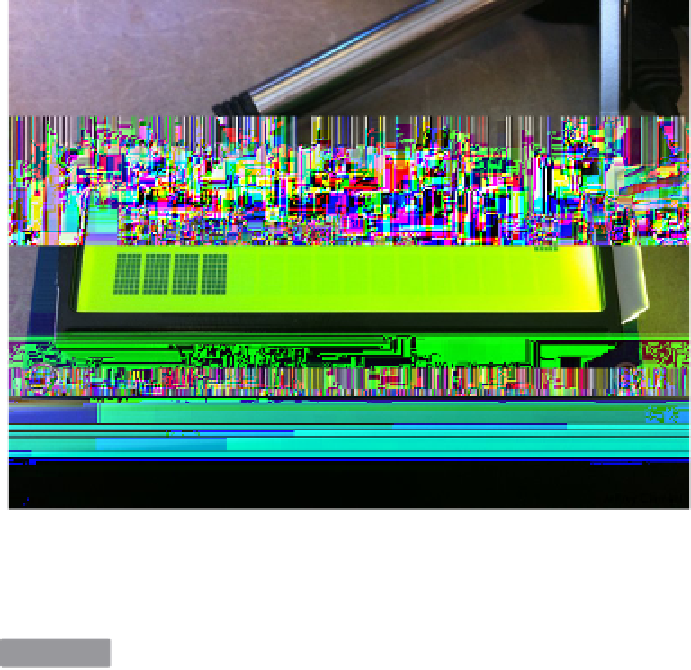Hardware Reference
In-Depth Information
comma-separated values (CSV) file contains the list of geocaches in what is com-
monly referred to as “Microsoft Streets and Trips” format.
The simplest way to generate this CSV file is to run
GSAK
on Windows or
Open Cache
Manager
on Linux/OSX. You can also generate a CSV file directly on
http://geocach
ing.com
if you have a premium account and set up a “pocket query.”
Save the
nav.csv
file to the USB flash drive, unmount it, and insert it into the running
Cacheberry Pi. It should detect the USB flash drive, and the LCD screen will show a
progress indicator as it copies over the updated geocache database (
Figure 4-6
).
Figure 4-6.
Cacheberry Pi (photo by Jeff Clement,
http://cacheberrypi.jclement.ca
)
See the Light
HACK 42
Detecting the presence (and intensity) of light can help you to automate
all sorts of tasks, from the garden to home automation and beyond. Hack
your Raspberry Pi and it will see the light!
Few things are constant in our world, but the rising and setting of the sun is close
enough that you can count it as one, at least for the next five billion years or so. By
monitoring the presence and intensity of light, you can tell whether it is day or night,
whether it is sunny or cloudy, or if someone has turned on a lamp in a room. But to do
that, you need a luminosity sensor.

